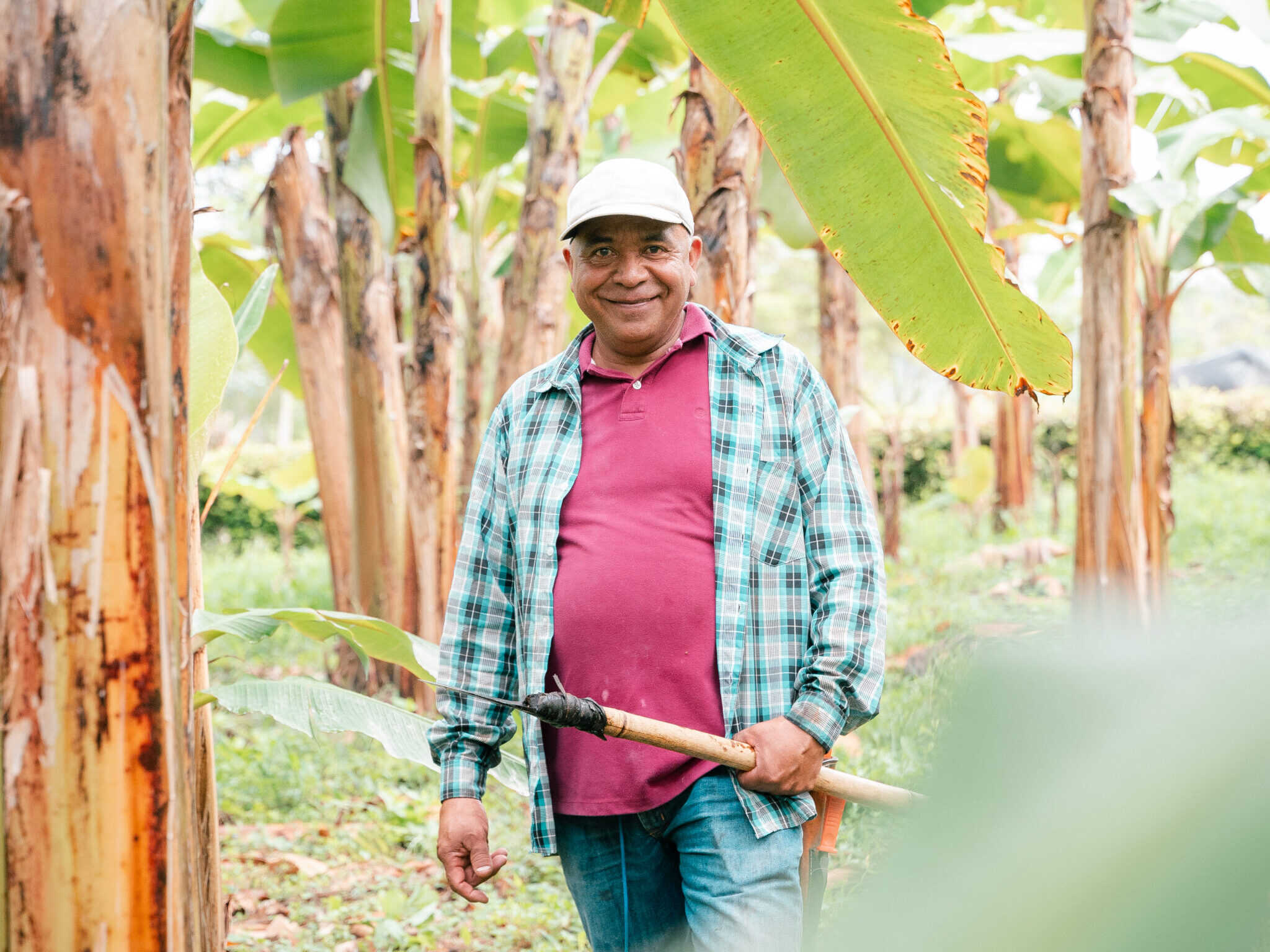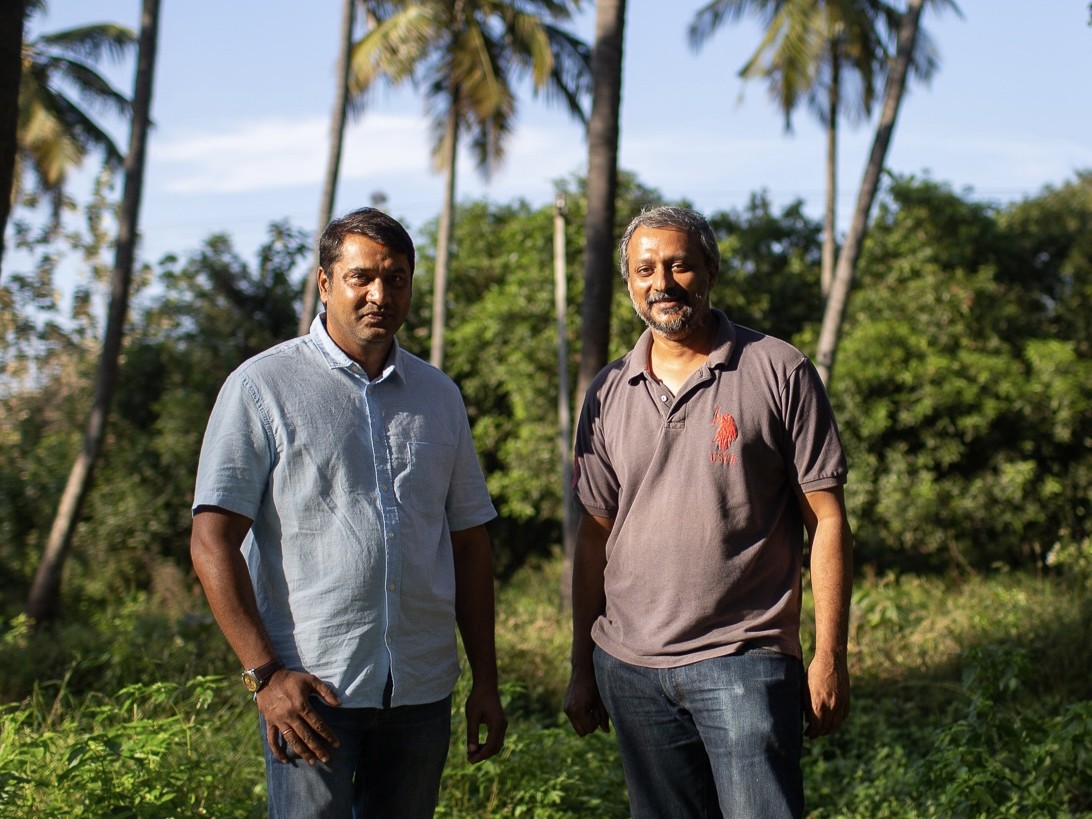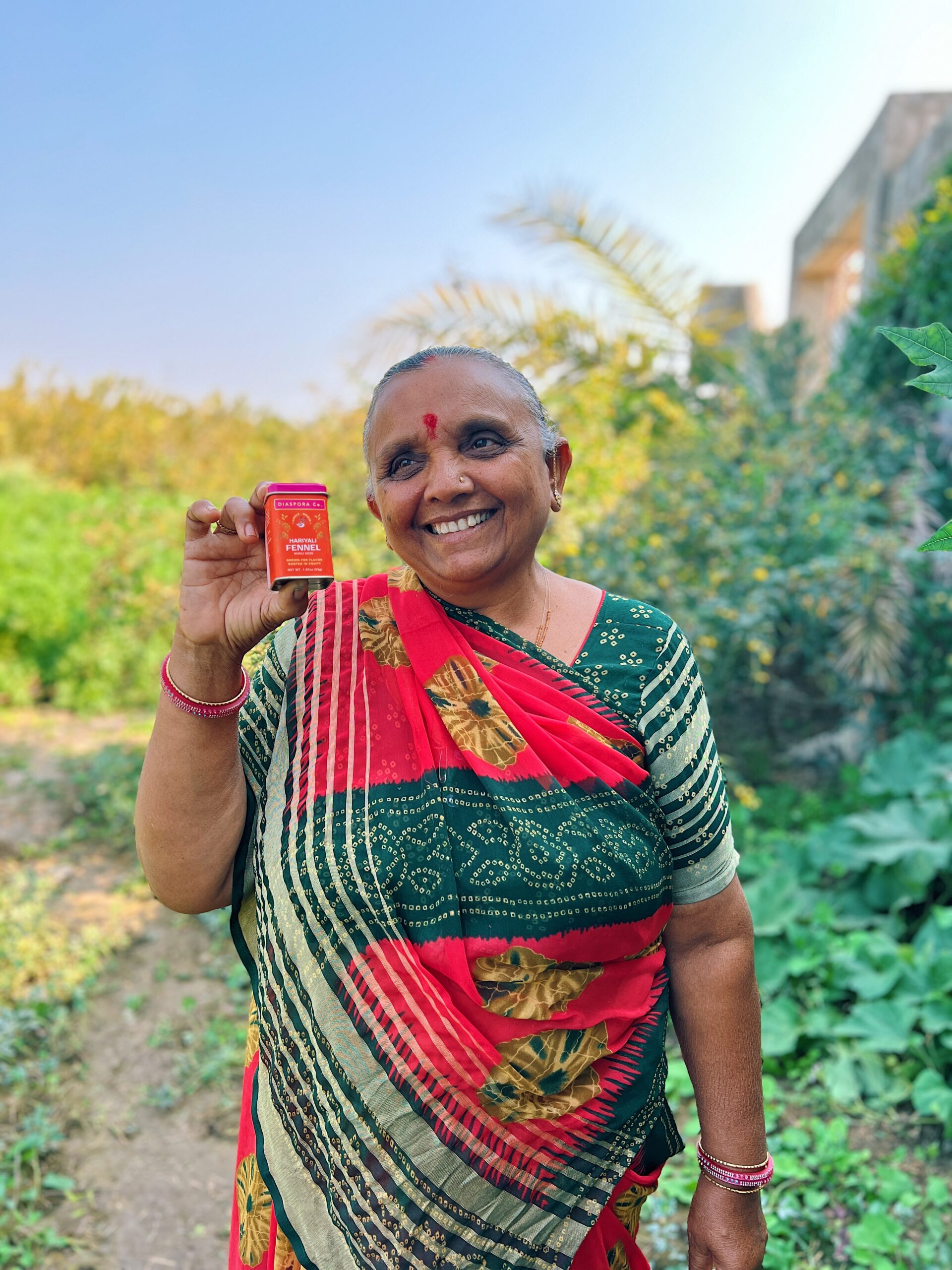by Jasper van Brakel, RSF CEO. This post originally appeared on ImpactAlpha.

A regenerative economy – one that transcends the transactional, centers relationships, creates shared value, and uses money as a tool to regenerate communities and natural environments – is not just a utopian fantasy. I know that because a growing number of us are making it real. We’re hacking current finance structures to achieve regenerative returns, and in the process, we’re building regenerative models.
RSF is fully committed to making regenerative finance business as usual, and we know it will take people working in many different ways and places to get there. I recently got together with two fellow practitioners – Betty Francisco, CEO of Boston Impact Initiative, and Mark Lewis, managing partner at Trailhead Capital – to talk about hacks that work, lessons learned and pathways forward.
Jasper: What are you doing to hack the system? How are you using or rethinking conventional finance tools?
Betty: In our world, the three key things are place-based investing, leveraging integrated capital, and using investment to drive racial and economic justice. For us, integrated capital means playing with every tool in the toolbox, from grants to debt and equity, and being creative on finance that is truly friendly to the entrepreneur.
Conventional finance has left a lot of people without access to capital, and we are trying to challenge and break that cycle, so we don’t use credit scores or personal guarantees. We use trust-based investing approaches. And because BI is focused on using investment to drive social change, we layer in racial equity and economic justice. To drive forward the regenerative outcomes we’re seeking, we may build impact covenants into transactions so that the entrepreneur and we as the lender or investor are working toward the same impact goals. Or we’ll incentivize entrepreneurs with more beneficial, friendlier capital.
Jasper: Can you give us a picture of what that looks like in practice?
Betty: A good example is an investment we made jointly with RSF in Roundhead Brewing, a Latino-owned brewery and restaurant in Boston’s Hyde Park neighborhood. When they came to us they were going to have a very traditional compensation structure, with tipped-wage employees. We’ve got folks in the solidarity economy movement on our investment committee, and they taught us that the tipped wage is rooted in the post-slavery era, where a lot of the African-Americans who were even able to get a job in a restaurant only made tips and could never earn a living wage. So the only way we could get this investment past our investment committee was to figure out a new compensation structure. We worked with Roundhead to create an alternative approach: a 20% administrative fee on all guest checks. The fee enables Roundhead to pay living wages and close the gap between the front- and back-of-house staff.
That enabled Roundhead to build a much stronger employee base, retaining their talented staff over the last two years. Just this summer they also were able to buy their building, securing their future as a gathering place for Boston’s diverse communities. Between its ownership, what they’ve done with compensation, and other practices they’ve implemented to foster community and belonging, it’s an example of what a regenerative investment can look like.
Jasper: Mark, you’re taking quite a different path to regenerative results. What’s your take on hacking the system?
Mark: Trailhead is a venture capital firm. We have the same model as a typical Silicon Valley VC doing seed and Series A funding. We put $1 million to $2 million into a company and we get 5% to 10% ownership stakes. We’re making 30 investments and we know a lot of them aren’t going to work; we’re trying to find really big growth opportunities in a couple of our portfolio companies. We consider ourselves regenerative finance because our theme is entirely regenerative agriculture.
Our thesis is that we can use a conventional finance strategy to achieve really beneficial outcomes around climate, biodiversity, water, human health, and rural livelihoods. We’ve made 27 investments. When we make an investment, we underwrite not only the financial capabilities, but also the regenerative impact case. So we think through: Can this company save water? Can this company make a material impact on preserving pollinator habitat for biodiversity benefit? Can this company sequester atmospheric carbon? Can this company prove that it’s leading to better human health outcomes?
Jasper: Can you give us an example?
Mark: One example is Local Line, which works with Chipotle to figure out how to source tomatoes for their East Coast stores closer to the East Coast and their West Coast stores closer to the West Coast, so that they’re not shipping products across the country all day, every day. There’s a huge environmental benefit just in regionalizing food supply chains within one company. Local Line saved over 800 million food miles in 2023.
In my view, scale is impact and impact is scale. I just don’t think that slow money approaches like 0% interest loans are going to solve the problems that we have on a global scale in a timely fashion. So I describe myself as a climate activist pretending to be a venture capitalist, because I don’t think the government’s going to save us and I don’t think nonprofits can come up with all the solutions. We need market-based scalable solutions. So that’s our approach.
Jasper: RSF thinks of scale in terms of model building; we also share BII’s commitment to community-based regenerative finance. Our main vehicle is the Social Investment Fund, which supports loans to social enterprises across the U.S. and Canada that are working to create long-term social and environmental benefit. Investors in the SIF receive what we call a regenerative return: a lower-than-market financial return combined with a dramatically higher-than-market social and environmental return.
We’re particularly interested in demonstrating approaches that can be replicated and that integrate social and environmental innovation. Goodr is a great example of that. It’s an Atlanta-based business that operates nationwide to reduce food waste, feed food-insecure people, and minimize the environmental impact of food production. They work with large-scale businesses to direct surplus food to nonprofit organizations and to Goodr’s own free pop-up markets. And they divert food that can’t be eaten into organics recycling and holistic waste management programs. We especially like that they approach hunger with a dignity lens by giving people the ability to “shop” for their own food.
Another way we try to increase our investors’ regenerative return is by supporting specialized funders that are pursuing scale in our focus areas. We’ve issued significant loans to Mad Capital, which funds regenerative farm transitions (Trailhead is also an investor), and Sunwealth, which develops community solar with an equity focus.
Betty: We are also trying to adjust expectations around risk and return. As an impact-first fund, we accept lower returns from our loans and investments. Our loans are 5% to 7%, below current conventional bank loans or other loans you might get, and we cap our return on equity at 1.5X to 3X, depending on how much impact there is.
Jasper: What are some lessons you’ve learned from this work?
Mark: One big learning for me is I think it’s more effective to build bridges to the existing paradigm. There’s this debate of do you try to fight against the system or fight within the system? I’ve done some of both and I’m currently on a kick of working with the existing system and not creating an us-versus-them paradigm. If we want to make the impact we need at scale and in a relatively short time frame, we’ve got to work with the people who have all the money and all the power.
Part of our analysis is, if we’re going to change the food system in the U.S., we have to change how our national policy works. And in order to really move the needle on that, you need to enlist the help of people who have lobbyists. You can either lob small rocks at these people and say, “You’re doing it wrong,” or you can reach out a hand and say, “How can I help? And have you thought about not killing all the pollinators? Have you thought about not draining our aquifers? Have you thought about growing something other than corn or soybeans? Have you thought about improving your animal welfare standards?”
We’re all on this little planet together and our futures are tied together so let’s give each other the benefit of the doubt and try to work on positive solutions, whether you’re a big powerful company or you’re a small startup trying to innovate and disrupt in that space.
Betty: I am a lawyer by training. I did a lot of investments for venture capital firms in tech and biotech. And I’m like, “Okay, I hear what Mark is saying. That’s how I used to think.” But now I’ve seen an alternative to that kind of investing. And the learning is that it’s very difficult to shift how we think about risk and return.
Our thesis is around economic justice and driving racial equity through our investments, which is really trying to shift the power dynamics in those investments. It’s hard because you’re fighting against what people perceive as what we should be aiming for, which is earning a high return and concentrating power. This idea that you should prioritize environmental and social impact versus financial return is a huge change in mindset.
Jasper: It is. Changing how people relate to money has been core to RSF’s approach since forever. We’re trying to lead away from the winner-take-all mentality to an abundance-based approach that creates more good for everyone. Many of the people we’ve worked with have made this shift in thinking and found it transformative. But it definitely is an ongoing project.
Betty: It starts with this fundamental conversation of, “What is the purpose of capital and how can we use it to repair?” That’s the regenerative aspect. And repairing requires certain changes. It requires a different lens on what impact we want to see. It requires changing who should have power in decision-making. It’s not impossible, but that change has to be built into everything we do.
Jasper: What’s the biggest unrealized opportunity for deploying regenerative finance?
Betty: We have just discussed a range of perspectives around how to deploy funds, but in the end we need lots of funds moving money.
The biggest investment we can make is taking the wealth that’s really concentrated in this country and distributing it more equitably to those that are driving systems change—whether it’s regenerative ag, climate resilience, approaches that advance worker ownership, or new products and services that address equity issues in specific communities.
How do we support alternatives to capitalism and how do we finance those? We’re trying to finance cooperatives and community land trusts, as well as more mainstream traditional businesses. But it all requires very, very patient and often philanthropic capital. That needs to move. How do we unleash that locked-up, concentrated wealth?
Mark: I would double-click on that because my biggest frustration is the trillions of dollars sitting in foundations and donor-advised funds that could be catalyzing the change we all claim we want to see. That wealth cannot go to the next generation. It has to be given away. So two things: One, foundations should stop granting the annual 5% minimum. We need more of them to say, “We will have failed if this thing has more money in it 50 years from now than it does today, because that will mean that we didn’t give away money while the world was burning.”
And then the second is, if you can’t get it past your investment committee to give away more than 5%, at least align the 95% of your corpus with your charitable giving purposes. If your priority is climate change, make sure your 95% that’s invested in the markets aligns with that charitable purpose because oftentimes it doesn’t, and you can make really good impact with those investment dollars. The Rockefeller Foundation is one of our LPs. They came into our fund via a PRI. So there are some innovative ways to do it.
Jasper: We’re singing slightly different tunes here and it doesn’t all have to sound in harmony. There are different paths to shared goals, right?
Betty: I do think it’s important to acknowledge that we’re all trying to create something new, and this is just what systems change is like. You take the old way, and you think, what exists as an alternative to that? And then the more disruptors proliferate, the more some models become mainstream.
When BII was formed, there were just a handful of funds focused on economic justice investing. Now there are hundreds and we are trying to fuel the next generation of fund managers by helping them to structure and design impact-first funds that meet the capital needs of particular places. We’ll see many different models, and some could emerge as fully alternative structures.
Mark: I love that. There’s a lot of evidence that in social and ecological settings, change happens at the edges. When I’m in a room full of hardcore post-capitalist, regenerative finance people, they think I’m the big bad extractive finance guy. And when I’m in a room full of extractive finance guys, I’m the biggest tree hugger they’ve ever seen. When I see that happen, I’m like, “Right, maybe that’s exactly where I want to be.”
Jasper: We don’t have the truth here; we haven’t found the one solution because there is no single pathway. We’re eating away at the edges of the existing model and looking at ways to model new things. RSF just published a piece on the principles that guide our work on regenerative social finance: act from abundance, center relationships, empower everyone, transcend ego, and move with change. And the point of “move with change” is to cultivate the conditions for communities to meet whatever the future brings.
Want to get insights like these delivered straight to your inbox? Sign up for RSF’s newsletter!


